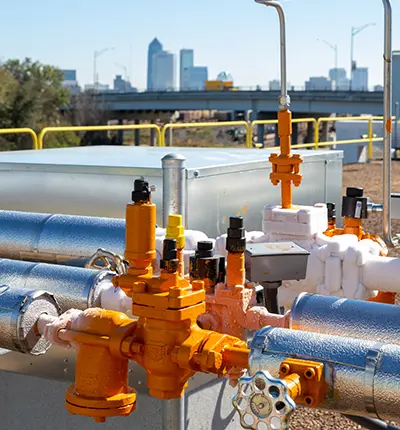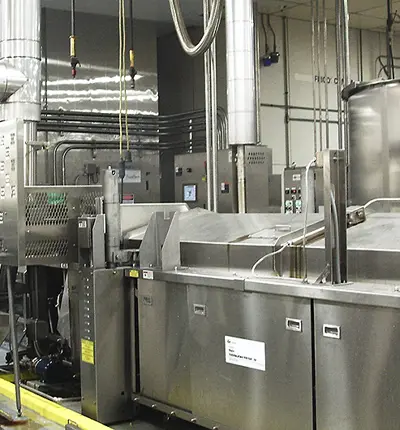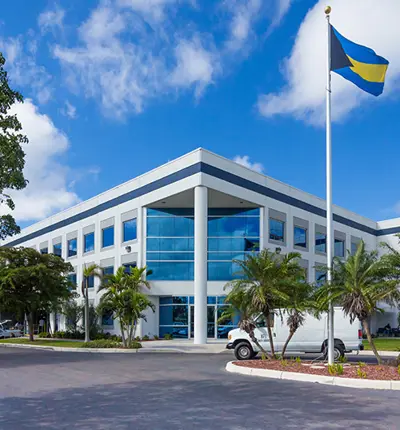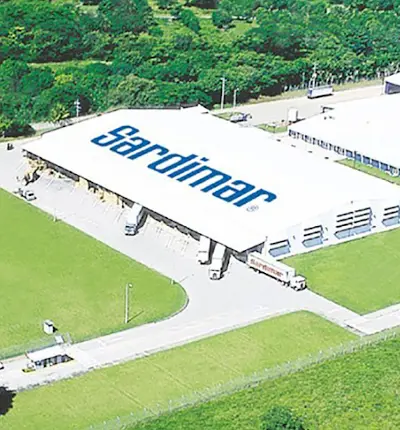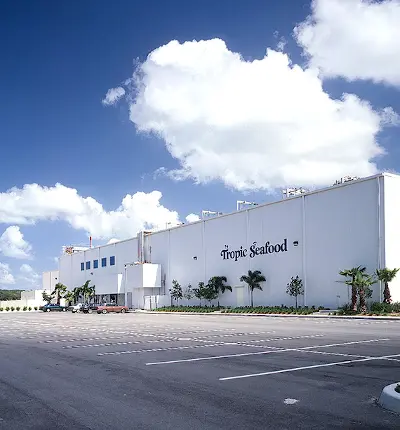Seafood Processing Plant Design & Construction
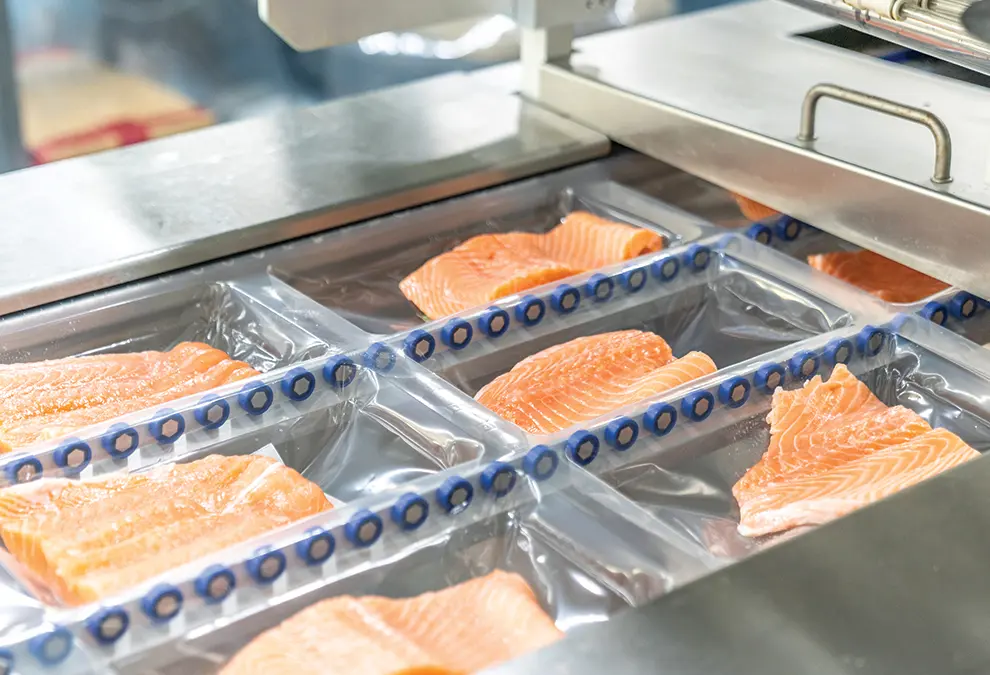)
We offer innovative solutions for quality and efficiency in seafood processing
In the realm of seafood processing, time and temperature are critical factors due to the delicate nature of fish and marine organisms. At Stellar, we understand that processing begins the moment the fish is harvested, necessitating meticulous cold storage and hygienic conditions throughout the entire journey to preserve product quality and prevent contamination from toxins, such as mercury.
At seafood processing plants, achieving the highest water quality standards is paramount, ensuring proper moisture levels to keep fish products in optimal conditions and preventing contamination. Our expertise lies not only in meeting these stringent standards but also in providing solutions that extend product shelf life, encompassing processes like drying, wet ice usage, freezing, and wastewater treatment.
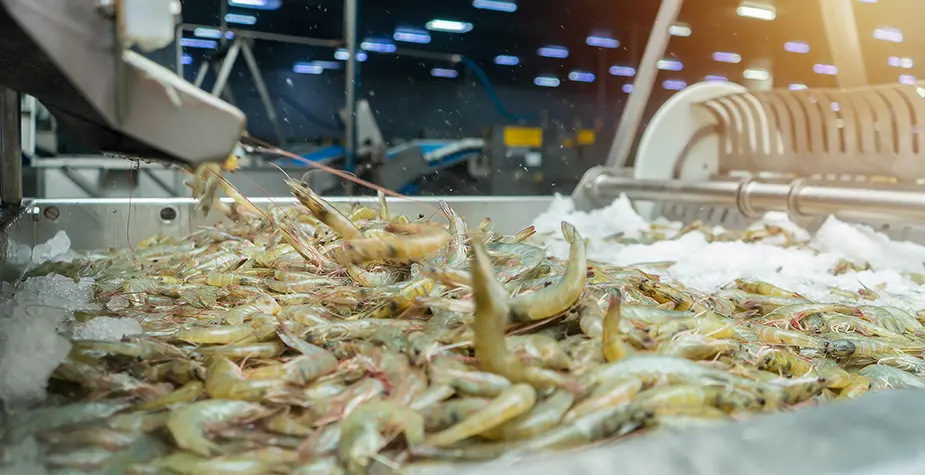
Our expertise spans from handling live and frozen fish to crafting finished products like battered shrimp, tuna steaks, and lobster
We have successfully worked on a wide array of seafood processing applications and packaging, including:
Live fish farms
Live fish farms employ different production systems based on the specific requirements of the fish species being cultivated and the available resources. Common production systems include pond culture, raceways, recirculating aquaculture systems (RAS), and cage culture in open water bodies such as lakes, rivers, or coastal areas. Proper management practices are essential to minimize the environmental impact of fish farming operations, including waste management, water quality monitoring, and habitat conservation.
Individual quick freezing (IQF)
Individual Quick Freezing (IQF) is a rapid freezing process used in the food industry to freeze individual pieces of food separately. Unlike traditional methods of freezing, which involve freezing food items together in bulk, IQF freezes each piece individually. This method offers several advantages, including better preservation of quality, texture, and flavor of the food. The process involves placing the food items on a conveyor belt or tray and moving them into a freezing chamber where they are exposed to very cold air (-30°C to -40°C) circulated by fans. The rapid circulation of cold air around each individual piece ensures quick and even freezing, resulting in minimal ice crystal formation and better retention of the food's natural properties. IQF products are popular in both retail and food service industries due to their convenience, extended shelf life, and high quality.
Battered and boxed seafood
The processing of battered seafood typically involves several steps, from sourcing and cleaning the seafood to battering, frying, and packaging.The packaging is designed to preserve the freshness and quality of the product while also providing convenience for consumers. Throughout the processing steps, quality control measures are implemented to ensure that the battered seafood meets food safety and quality standards. This may include regular inspections, temperature monitoring, and sensory evaluations of the finished product.
Restaurant cuts and portion cutting
Portion cutting processing plays a crucial role in the food industry by providing consumers with convenient and consistent portion sizes of meat, poultry, fish, and other proteins. It helps streamline food preparation in both retail and food service establishments while ensuring product quality, freshness, and safety.
Modified atmospheric packaging/gas flush packaging
Modified Atmospheric Packaging (MAP) or Gas Flush Packaging is a technique used in the food packaging industry to extend the shelf life of perishable foods by modifying the atmosphere inside the packaging. The food product is placed in a packaging material, typically a tray or pouch made of plastic or other flexible materials. Before sealing the packaging, a specific gas or gas mixture is introduced into the package to displace the air inside. The most commonly used gases for MAP are carbon dioxide (CO2), nitrogen (N2), and oxygen (O2). The composition of the gas mixture depends on the type of food being packaged and the desired shelf life. The gas composition is carefully controlled to create an optimal atmosphere for preserving the food. It's crucial to ensure that the packaging is hermetically sealed to prevent the gas from leaking out and air from entering. Proper sealing equipment and techniques are used to achieve this, such as heat sealing or vacuum sealing.
As your trusted partner, Stellar is committed to delivering solutions that adhere to the highest industry standards, ensuring the preservation of seafood freshness and quality throughout the processing journey. With our comprehensive expertise, you can rest assured that your seafood processing operations will be optimized for excellence and efficiency.
The tools you need to improve your food or beverage plant’s efficiency. Discover how a facility assessment can benefit your business, which specific areas to examine to save you money, and what to look for in an assessment partner.
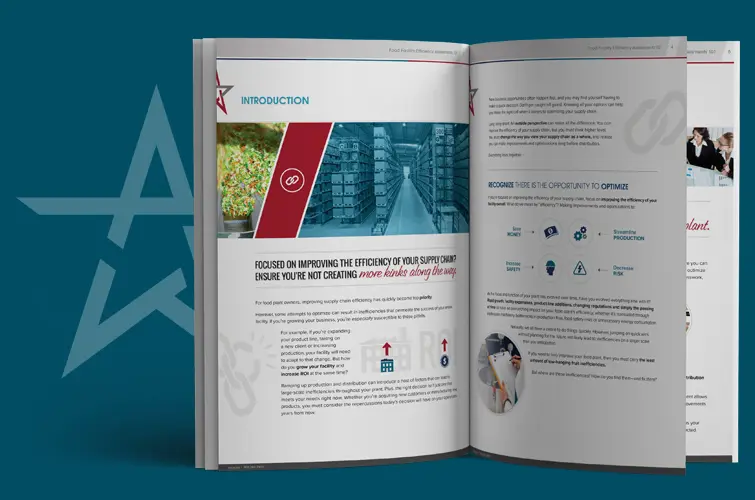
Stellar's leadership has the expertise and understanding necessary to advise you, even on the most complex challenges.
